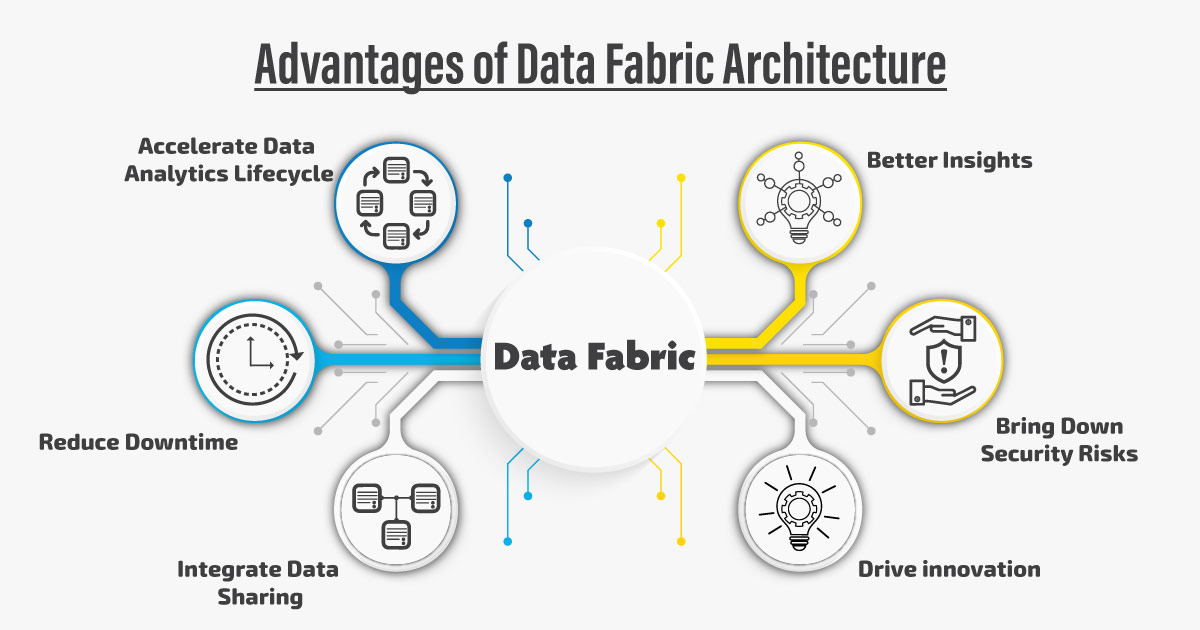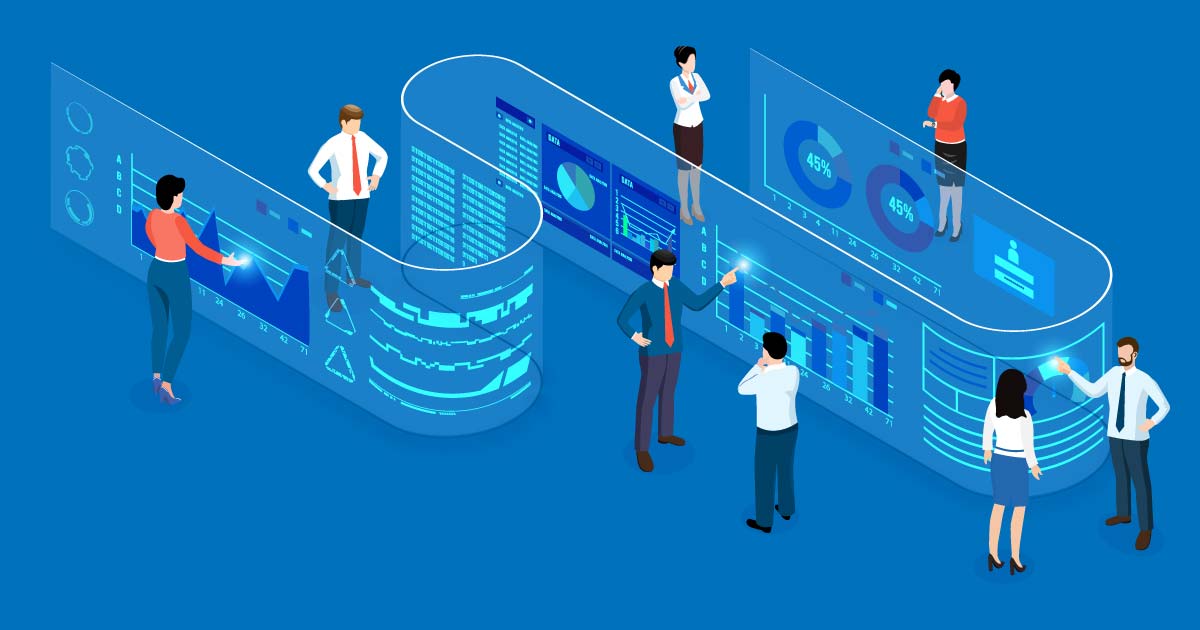An efficient enterprise data architecture serves as a fool-proof source of product and service information that can address specific business needs. Data fabric architecture consolidates knowledge graphs, data integration, AI, and metadata capabilities to ensure there is consistent access and exchange of data across the organization. It stores data in a centralized structured repository as well. Data fabric architecture is an industry-agnostic concept; that is relevant across domains.
Let us first understand the main components of data fabric architecture.
Building Blocks of Data Fabric Architecture
- Data management practice defines stakeholders who can access business information, the extent of drilling down data to detail, how often it would be updated, and details of what will be masked and encrypted and transformation efforts. Knowledge graphs and AI-powered metadata activation help in unified data governance ensuring the safety and accuracy of organizational data.
- Data ingestion brings together users who can connect to all types of business information regardless of its localization and volume combining multiple data types. Video recordings from brick-and-mortar stores with online financial transactions aggregate information in streams or batches in real-time too.
- Data processing is a staging area for data across types and formats that can be filtered for further use.
- Data orchestration cleanses, enriches, aggregates, and reformats processed business information to meet the requirements of the target data directories.
- Data discovery helps business and IT specialists apply data for recognizing dependencies and identifying inaccuracies.
Data access delivers data to multiple consumer applications or people down the line, or to the data marketplace, for business users.

Enterprise innovation using data fabric technologies can accelerate the data and analytics lifecycle.
- Data fabric technology helps in scheduling preventive maintenance analysis, thus reducing downtime.
- Shuts down data silos and helps businesses work towards providing an integrated structure of data sharing.
- Data fabrics show enterprises how customers use their services by compiling different sets of data and using them to create strategies that can enhance customer experience. Today, a 360-degree customer view consolidates data from departments ranging from compliance to marketing/segmentation and risk/underwriting.
- The requirements for data privacy and security have become a key corporate risk that needs to be dealt with. A robust data governance program depends on data fabric because only this system of record tracks all data assets, dependencies, risk profiles, and usage policy enforcement.
- Data fabric architecture impacts healthcare enterprises and academic institutions as they are data-rich, need to store massive amounts of valuable content, and rely heavily on knowledge sharing that helps research and drive innovation.
With the help of a modern data architecture approach, enterprises can deliver better customer experiences, drive growth, reduce costs, and gain productive insights. With our extensive experience and expertise, Gemini Consulting & Services can help you unlock the value of data by building a modern data fabric architecture. Contact us to know how to dive into data fabric architecture and accelerate your business growth.
Building an Efficient Modern Data Fabric Architecture
According to Gartner, Data and Analytics (D&A) leaders should ensure a solid technology base, identify the required core capabilities, and evaluate the existing data management tools. This will help deliver business value through data fabric design.
An efficient product and master data architecture can address the business need for speed, flexibility, and innovation. Legacy data architecture is not equipped to handle the vast amount of data accumulated and address the current data processing needs. This leaves the business to deal with a data swamp. To take advantage of the data fabric architecture and extract maximum business value from it, here are some critical best practices that need to be followed.

- Focus on building flexible but extensible data schemas by making a shift and reducing manual tasks.
- Building domain-based architecture helps businesses eliminate clusters of centralized data lakes by using data virtualization techniques. Now, this allows organization and integration of distributed data assets while empowering users with a detailed data roadmap that facilitates better searchability, integration, storage, and architectural changes.
- Modern data architecture needs to ensure that updated and clean internal data is accessible to the stakeholders who require it on a case-to-case basis. A complete and centralized product information system and mobile device management application accelerate the automation of information access across diverse channels from a unified place.
- A resilient and intuitive real-time data fabric architecture helps enterprises process and analyze data for analytics that can track customer behavior in digital products which helps obtain insights into feature use, UX changes, usage, etc.
- Building a design that can handle data from both structured and unstructured sources and such formats without missing out on essential information. Businesses ca unlock maximum value from data when it there is a seamless collaboration between various teams and the data analytics department.
- With cost-effective, cloud-based Product Information Management (PIM) or Mobile Device Management (MDM) solutions, enterprises can make the best out of ready-to-use and configured solutions that allow data to be seamlessly uploaded for diverse marketing campaigns.
- Modular data architectures use open-source components that can be swapped for new technologies as needed without affecting the other parts of the architecture. It enables businesses to set up an independent data layer consisting of commercial databases and open-source components.



